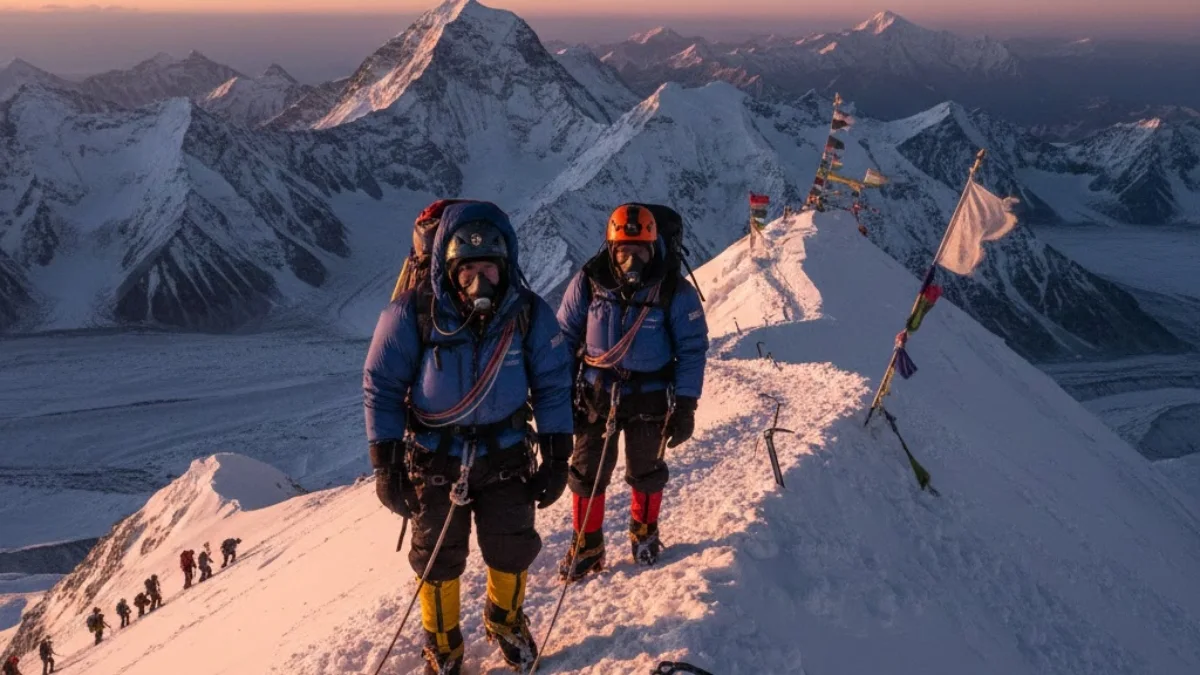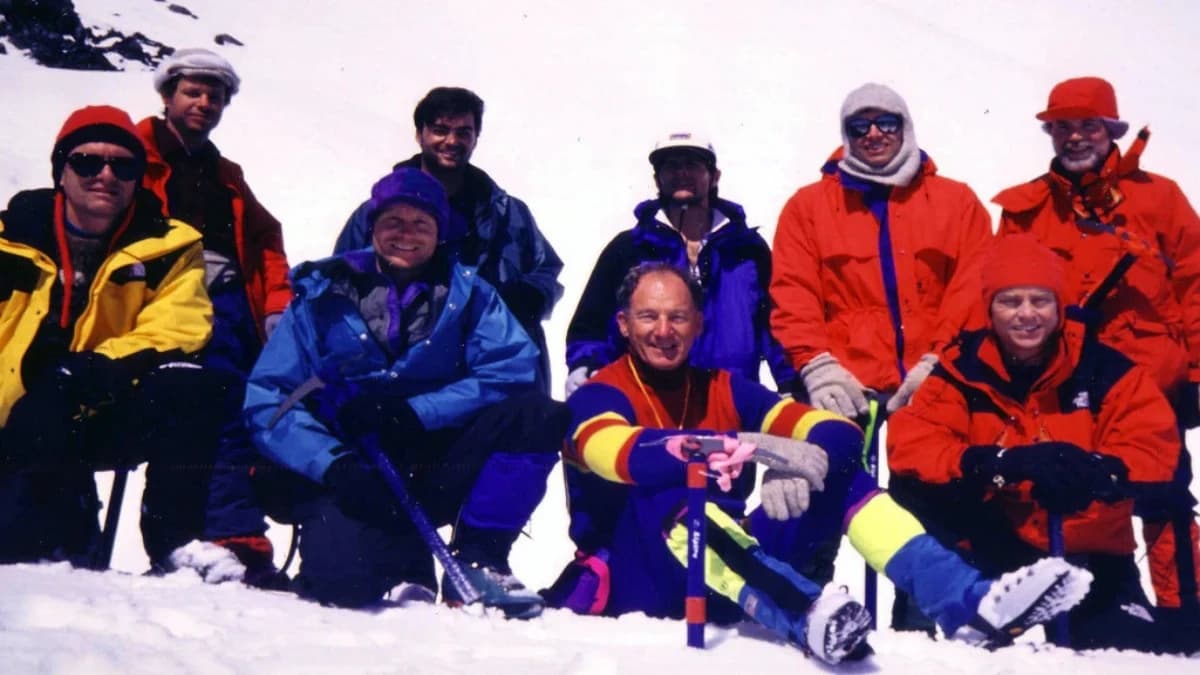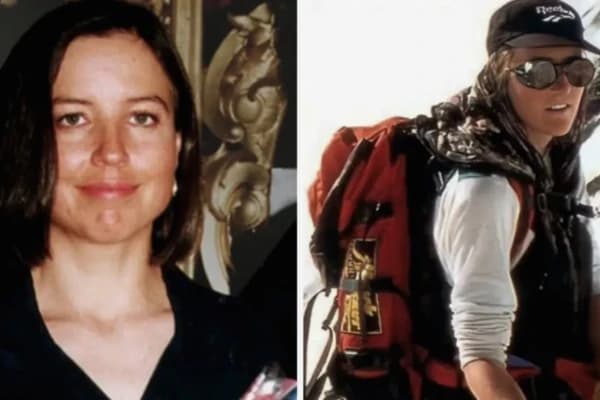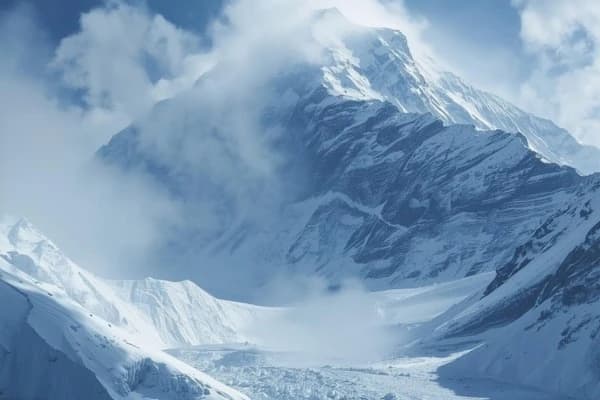If you’ve ever dreamed of climbing to the roof of the world, knowing the cost of climbing Mount Everest is an important first step. Climbing Everest takes months of preparation, expert guidance, reliable equipment, and careful planning. It is an experience unlike any other, but for most people, the biggest challenge is saving enough money, which can take years.
The cost of climbing Mount Everest in 2026 varies a lot depending on the type of expedition, level of support, and what is included. On average, climbers can expect to spend between $33,590 and $129,995, with the median price around $54,995. The total cost depends on factors like the type of guide (Sherpa-guided or Western-guided), the mandatory Nepal climbing permit, gear and supplies, travel and logistics, and insurance. Luxury or flash expeditions can cost over $100,000, while basic Sherpa-led climbs start around $33,590.
This blog breaks down the 2026 Everest expedition pricing in detail so you can see all the major expenses and plan your journey to the world’s highest summit with confidence.
What Is the Average Mount Everest Climbing Cost?

The cost of climbing Mount Everest can vary a lot depending on the type of expedition, the level of support, and the services included. It is not a simple number because each climber’s experience can be very different. On average, most climbers spend between $33,590 and $129,995, with prices increasing for luxury options or fast-track expeditions.
For 2026, the key pricing insights are:
- Average Everest expedition cost: $61,267
- Median price: $54,995
If we exclude private trips and specialized Flash Expeditions, which are significantly more expensive:
- Average cost: $55,380
- Median cost: $51,000
The costs have risen sharply in recent years due to factors like inflation, higher wages for local guides, global economic changes, and increasing costs for permits and logistics.
In simple terms, climbing Everest is a serious financial commitment. All-inclusive or luxury packages can cost more than $100,000, while even the most basic Sherpa-guided trips start at about $33,590. Climbers can plan their budget and choose the kind of adventure that best suits their objectives by being aware of these statistics. You can also simply choose Everest Base Camp trek to experience Everest closely.
Key Drivers of the Everest Expedition Cost
The cost of climbing Mount Everest depends on four main factors:
- Guiding Service: Prices vary from affordable Sherpa‑led trips to fully Western‑guided or luxury expeditions.
- Travel: Flights, visas, and gear transport add significantly to the total cost.
- Permits and Insurance: The Nepal climbing permit is now very expensive, and insurance for evacuation or medical emergencies is often required.
- Supplies and Gear: Personal gear, supplemental oxygen, and food are major cost items.
Together, these factors largely determine whether an expedition is budget‑friendly or a high‑end, luxury experience.
Guiding Services
Guide services generally fall into a few broad categories, though the exact cost depends heavily on the operator and what they include:
|
Expedition Type |
Typical / Estimated Price |
Notes & Caveats |
|
Sherpa‑Led (Nepali Operators) |
~$30,000 – $45,000+ |
Many Nepali‑led services are more affordable. Some sources (Connecting the Dots Project) estimate a Sherpa-supported expedition cost around $47,000 for support plus guide. |
|
Mid‑Range / Sherpa Supported |
~$50,000+ |
For example, a Western guide with Sherpa support; cost depends on how much everything (gear, oxygen, base camp) is included in the package. |
|
Western‑Guided Teams |
~$76,000 (or more) |
According to Connecting the Dots, a foreign guide + Sherpa or Western guide arrangement can get to ~$76,000 |
|
Luxury / Flash Expeditions |
$100,000+ |
These climbs often include faster schedules, pre-acclimatization, more oxygen, and premium logistics - but pricing varies wildly by operator. |
Example Expedition Durations
- Standard (35 to 42 days): Many companies charge in this range for full service.
- Express (around 21 days): Costs tend to be higher due to fast logistics, more oxygen, and extra support.
All‑Inclusive vs Logistics‑Only
- All-inclusive: $40,000 – $100,000+, includes most expenses.
- Logistics-only: $32,000 – $60,000, suitable only for very experienced climbers.
Important: Nepal requires every two climbers to hire at least one certified local guide for peaks above 8,000 m, including Everest.
Permits and Mandatory Government Fees
- Nepal Climbing Permit (Spring Season, March–May): $15,000 per climber
Other Seasonal Permit Costs
- Autumn (Sep–Nov): Approximately $7,500
- Monsoon/Winter (Jun–Aug / Dec–Feb): Around $3,750
Additional Fees to Consider
- Mandatory guide fee: For every two climbers, you must hire one licensed guide.
- Trash deposit: About $4,000, as estimated by several expedition operators.
- Liaison officer fee: Roughly $3,000 per team.
Note: These fees, especially the trash deposit and liaison officer charges, are based on operator estimates and can vary depending on the expedition company you choose.
Sir Edmund Hillary was a New Zealand mountaineer and explorer, famously known as one of the first two people to reach the summit of Mount Everest in 1953.
Essential Supplies, Gear, and Support
Here are rough, evidence-supported estimates for gear, oxygen, and support:
|
Cost Component |
Typical Price (Estimated) |
|
Supplemental Oxygen |
~$3,000–$5,000 |
|
Sherpa Oxygen / Additional Oxygen Costs |
Part of above or similar — depends on how many bottles are needed. |
|
Personal High‑Altitude Mountaineering Gear |
~$10,000–$15,000 |
|
Food, Fuel, Base Camp |
Often $10,000+, including porters and yaks (~$1,000+) |
Travel, Logistics, and Accommodation
Here are some of the verified or reasonably estimated travel related costs:
- International Travel (Flights to Nepal): $3,000 to $7,000, varying by origin and airline, according to cost breakdown sources.
- Nepal Visa: Usually low compared to the overall expedition cost. Some sources estimate several hundred dollars for additional travel expenses.
- Domestic Flights (Kathmandu to Lukla): Typically around $300 to $500 round trip, depending on season and airline. This is a common cost in operator budgets.
- Gear Transport (Porters and Yaks): Many estimates place the cost at a minimum of $1,000 for transporting gear, depending on the amount and method of transport.
- Food and Lodging (Lukla to Base Camp): Costs can vary significantly, as expedition operators usually allocate several thousand dollars for base camp essentials such as food, fuel, and accommodations, depending on the length of the trip and the level of comfort offered.
Insurance and Tips For Mount Everest Climbers

Insurance
When preparing for a Mount Everest trek, having the right insurance is important for your safety and peace of mind. Most expedition providers require climbers to have:
- Evacuation insurance to cover emergency rescues from high altitudes
- Medical insurance for any illness or injury during the climb
- Trip cancellation coverage in some cases, to protect against unexpected changes
Typical cost: Insurance generally ranges from $300 to $5,000, depending on the length of your expedition, your age, and your overall health. Choosing comprehensive coverage ensures climbers are protected from unexpected challenges on the mountain.
Tips and Bonuses
Tipping is an important part of Everest climbing culture, especially for guides and support staff who help keep you safe and make your expedition successful. Typical tipping costs include:
- Summit bonus for guides: $1,500 to $3,500, given for successful summit support
- Group tips: $500 to $1,000, shared among Sherpas, cooks, and other staff
- General guideline: Around 10% of the total expedition cost
Planning for insurance and tips is important. While it adds to the overall cost of climbing Mount Everest, it ensures you have proper support, motivates your team, and helps maintain good relationships with your expedition staff.
To be safe in high altitude, know about the altitude sickness and its prevention.
Total Estimated Cost to Climb Mount Everest
Climbing Mount Everest is a big financial commitment, and costs can vary based on the type of expedition. Here’s a detailed estimate of total expenses for 2026, including guides, permits, gear, travel, and insurance.
1. Sherpa-Led Expeditions (Nepali Operators)
The most budget-friendly option, led by experienced local Sherpas.
Estimated Total Cost: $33,590 – $45,000
Breakdown:
- Guide and support: Around $30,000 to $35,000
- Nepal climbing permit (Spring): $15,000
- Gear and supplies: Approximately $7,000 to $10,000
- Travel and logistics (flights, transport, lodging): About $4,000 to $7,000
- Insurance and tips: Roughly $1,500 to $3,500
2. Mid-Range / Sherpa Supported Expeditions
A combination of Sherpa knowledge and Western leadership that offers structured logistics and opportunity for partial certification.
Estimated Total Cost: $50,000 – $60,000
Breakdown:
- Guide and support: Approx. $50,000
- Nepal climbing permit: $15,000
- Gear and supplies: Approximately $10,000 to $12,000
- Travel and logistics: About $4,000 to $6,000
- Insurance and tips: Roughly $2,000 to $5,000
3. Western-Guided Teams
These trips are fully Western-led, offering top-notch logistics, experienced IFMGA/UIAGM-certified guides, and strong support throughout the expedition.
Estimated Total Cost: $75,000 – $85,000
Breakdown:
- Guide and support: ~$74,995
- Nepal climbing permit: $15,000
- Gear and supplies: ~$12,000 – $15,000
- Travel and logistics: ~$5,000 – $7,000
- Insurance and tips: ~$3,000 – $5,000
4. Luxury / Flash Expeditions
These are high-end expeditions featuring pre-acclimatization, faster schedules, extra oxygen, and premium logistical support.
Estimated Total Cost: $100,000 – $130,000+
Breakdown:
- Guide and support: $100,000+
- Nepal climbing permit: $15,000
- Gear and supplies: $15,000+
- Travel and logistics: $7,000+
- Insurance and tips: $5,000+
Summary Table:
|
Expedition Type |
Total Estimated Cost (2026) |
|
Sherpa-Led |
$33,590 – $45,000 |
|
Mid-Range / Sherpa Supported |
$50,000 – $60,000 |
|
Western-Guided Teams |
$75,000 – $85,000 |
|
Luxury / Flash Expeditions |
$100,000 – $130,000+ |
This breakdown enables climbers to plan their budget accurately and comprehend the financial commitment necessary for a successful Everest expedition.
Final Thoughts
Climbing Mount Everest is a remarkable achievement that requires a significant financial investment. The Mount Everest Climbing Cost ranges from $33,590 for basic Sherpa-led expeditions to more than $130,000 for high-end Flash-style climbs. The primary cost drivers include guide selection, logistics, gear, and the mandatory $15,000 Nepal climbing permit.
This journey demands years of preparation and financial planning. Understanding these costs is the essential first step toward reaching the world’s highest summit. Contact Nepal Gateway Trekking to know more about Everest treks.
Frequently Asked Questions (FAQ)
How much does it cost to climb Mount Everest in 2026?
The average cost is $61,267, with a median of $54,995. Prices range from $33,590 for Sherpa-Guided Expeditions to more than $130,000 for luxury or Flash Expeditions.
Why are Everest expeditions so expensive?
Everest expeditions are expensive because the costs are driven by the $15,000 Nepal Climbing Permit, logistics, oxygen, Sherpa wages, guide support, and inflation in both global and local markets.
Are Sherpa-Guided Expeditions cheaper than Western-Guided ones?
Yes. Sherpa-Guided Expeditions typically cost $39,000–$45,000, while Western-Guided Teams average $74,995 due to certifications, advanced logistics, and higher operational overhead.
What mandatory fees are associated with the Nepal Climbing Permit?
Additional mandatory costs include:
- $2,500 permit organization fee
- $4,000 trash deposit
- $3,000 liaison officer fee
What is a Flash Expedition?
Flash Expeditions shorten time on the mountain using pre-acclimatization methods such as hypoxic tents and extensive oxygen support. These programs usually cost $100,000+.




